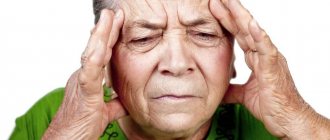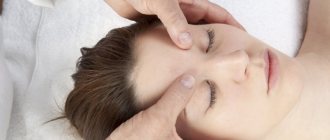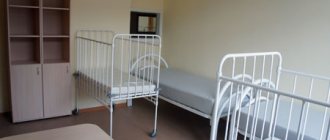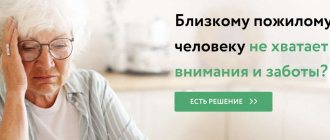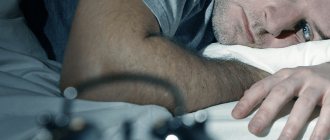This question is asked by every patient with epileptic seizures. Recent advances in medicine have made epilepsy a treatable disease.
The latest antiepileptic drugs have been created , new principles of treatment have been developed, including surgery, a special ketogenic diet has been developed, modern diagnostic methods are used, qualified specialists - epileptologists have been trained, and treatment experience has been accumulated taking into account forms of epilepsy.
These innovations in epileptology have made it possible to help many patients with epilepsy, give them freedom from seizures, give them the opportunity to study, play sports, work and much more, and therefore live a full life.
Rational therapy of patients with all forms of epilepsy has made it possible to achieve a significant improvement in the condition of patients in the form of recovery, or long-term remission (complete absence of attacks during or upon discontinuation of therapy), or a reduction in the frequency of attacks by more than 50%. Through the joint efforts of science, doctors, patients and their loved ones, as well as with the support of the state (disability pensions for seriously ill patients, free medicines from preferential lists), with a favorable attitude towards such patients in society (the creation of public organizations, rehabilitation centers, publications in the media) at this stage has led to the fact that epilepsy can be cured completely in 60-70% of patients.
In 20-30% of patients, epilepsy is difficult to treat with AEDs, i.e. is pharmacoresistant.
Excited brain
In antiquity, epilepsy was called a “sacred disease” sent by the gods. On the one hand, its manifestations were frightening, but on the other, people suffering from this disease often had outstanding abilities. In the modern understanding, epilepsy is a heterogeneous group of diseases, the clinical picture of which is characterized by repeated convulsive attacks (fits). They arise as a result of synchronous excitation of all neurons of a separate area of the cerebral cortex - the epileptogenic focus. Sometimes an epileptic attack is preceded by an aura, manifested in the form of unexplained lightheadedness, sound or visual disturbances, depending on the location of the epileptic focus. Seizures occur as brief, involuntary spasms in one part of the body (partial seizures) or throughout the body (generalized seizures). Generalized seizures are often accompanied by loss of consciousness.
Article on the topic What to do if you have epilepsy, and how to help during an attack? Advice from a scientist Seizures can happen less than once a year, or up to several times a day if the disease is severe. Often the causes cannot be determined, and then they talk about idiopathic epilepsy. An international group of scientists led by specialists from the University of Melbourne found that 12% of idiopathic epilepsy is caused by a mutation of the DEPDC5 gene (the protein encoded by this gene is involved in signal transmission within neurons).
Secondary, or symptomatic, epilepsy can have the following causes: brain damage in the prenatal or perinatal period (hypoxia or birth trauma), head trauma and stroke causing brain hypoxia, brain infection, such as meningitis and encephalitis, parasitic diseases, brain tumor. There is also so-called cryptogenic epilepsy. This diagnosis is made when the cause of generalized symptomatic epilepsy cannot be accurately determined from research results.
An epileptic seizure can be triggered by factors affecting brain activity: hormonal changes (in particular, menstruation), flickering light or flashing images (when riding a train, in a car), intoxication (alcohol, some medications, toxic substances). There are also equivalents of epileptic seizures in the form of sudden onset mood disorders, disorders of consciousness, and also, in the case of severe disease, characteristic changes in personality and intelligence.
Two diseases are directly related to the course of epilepsy: migraine and depression. Epidemiological studies have shown that every fourth patient with epilepsy suffers from migraine, and the incidence of epileptic seizures in people with migraine reaches 17% or higher. In this case, depression is detected in 20–55% of patients with constant seizures and in 5–10% of people with controlled seizures. This association is most often observed in patients with a partial form that is resistant to treatment.
Article on the topic
Expert: A cure for epilepsy can be achieved in 65-75% of patients. Often, depression in epilepsy is not diagnosed, but that is exactly what it is, according to a study conducted at the Department of Nervous Diseases, Faculty of Postgraduate Education, Perm State Medical University named after. I.M. Sechenov, is the most important factor influencing the patient’s quality of life (its influence is higher than that of epilepsy itself).
Diagnosis of acquired epilepsy
Before making a diagnosis and prescribing treatment, the patient undergoes a full range of diagnostic procedures:
- A medical examination is carried out, an anamnesis is studied, and complaints are listened to. The interviews are conducted by a neurologist and a psychotherapist; these specialists are able to identify the presence of neuropsychiatric disorders at the first consultation.
- Instrumental diagnostics are prescribed, with its help you can find out about the nature of internal damage and see the area where the source of epiactivity is located. Hardware research includes:
- electroencephalography, it allows you to determine the degree of brain activity; with an artificially provoked attack, you can see the nature of the changes more clearly;
- magnetic resonance imaging - allows you to establish the cause of the deviation, identify the focus and find out the degree of its progression.
- Laboratory procedures are carried out to identify the presence of infectious, viral and bacterial complications.
Acquired epilepsy always has a cause of development associated with the influence of external or internal factors. Clarification of this circumstance will help in making a diagnosis and in selecting more effective therapy. It will also help in differentiating from similar ailments.
Curability has been proven
According to the European Commission on Epilepsy, this disease affects about 50 million people, or up to 1% of the world's population. In Russia, according to the Ministry of Health, epilepsy occurs with a frequency of 1.1 to 8.9 cases per 1000 people, but, according to experts, this disease is not sufficiently diagnosed. According to the chairman of the Russian Anti-Epileptic League, Professor Gagik Avakyan, in the vast majority of medical institutions epilepsy is detected using routine electroencephalography, the effectiveness of which is at best 30%. But to make an accurate differentiated diagnosis, at least a 12-24-hour video-EEG is required, capturing the time of night sleep (the effectiveness of the method is 88-95%). This procedure is usually available in paid medical institutions.
Few people know that 70% of children and adults newly diagnosed with epilepsy can be successfully treated (that is, seizures are completely controlled) with antiepileptic drugs. After two to five years of successful treatment, approximately 70% of children and 60% of adults can stop taking medications without risk of relapse. After this, if the patient follows the basic rules of the regime: sleeps for 7–8 hours, completely abstains from alcohol, the attacks, as a rule, do not return.
Article on the topic
“We are superfluous everywhere.” The story of a family raising a child with epilepsy Yet in developing countries, three quarters of people with epilepsy do not receive the treatment they need.
In Russia the situation is, of course, better, but different from that in developed countries. “Over the past 20 years, a lot of work has been done in pediatric epileptology, but at the same time, there is no reliable connection between pediatric and adult services,” says Professor Andrey Petrukhin, President of the Association of Epileptologists and Patients . “The adult neurological network is not ready to accept the patient and continue his treatment with an effective drug, which leads to loss of remission.”
Indeed, patients with epilepsy are observed either by neurologists or psychiatrists who are not able to understand the intricacies of diagnosis and treatment of this complex disease. Epileptologists in Russia are trained within the framework of postgraduate education programs, in particular at the Russian National Research Medical University named after N.I. Pirogov, but so far there are specialists not in all regions.
The problems also include the inaccessibility of drugs, and this is not only due to the high cost of the latter. “Unfortunately, new drugs are often unavailable to Russian patients due to the fact that they have not been registered in the Russian Federation,” says epileptologist, Ph.D. Yuri Shiryaev (University Headache Clinic) . “We do not have the right and opportunity to use effective medications recognized by the world medical community.”
Drug therapy
Antiepileptic drugs (or AEDs) must meet the following requirements:
- have a wide range of therapeutic effects;
- have no serious side effects;
- show a high level of efficiency.
Valproate is the most popular medicine. Among them, doctors practice prescribing Depakine, Convulex or Convulsofin, as well as carbamazepine drugs in the form of Tegretol or Finlepsin. There are medications that are used twice a day - for example, finlepsin retard or depakine chrono. As additional agents, it may be advisable to prescribe clonazepam or suxilep.
Among the old antiepileptic drugs of domestic production, hexamidine, diphenine, benzonal and phenobarbital used to be popular. It is known that in the late 90s of the last century, the International League Against Epilepsy made a proposal to prescribe old drugs not as often as before, due to their strong side effects. It was especially pronounced in children: they experienced a decrease in school performance, absent-mindedness, manifestations of hyperactivity or, conversely, drowsiness.
Recently, several new highly effective antiepileptic drugs have been officially introduced into practical use:
- topiramate or Topamax;
- lamictal or lamotrigine;
- levetiracetam or keppra;
- oxcarbazepine or trileptal, etc.
Each of these drugs has received official registration in our country. They can be prescribed to both children and adults.
Topamax is perhaps the most promising drug with proven clinical effectiveness in numerous studies around the world. Now more than 3 million patients around the world regularly use this medicine, noting its good tolerance. Topamax works equally well against any epileptic attack, including severe forms of the disease:
- symptomatic;
- generalized;
- focal.
Different dosages of Topamax make it convenient to take. In addition, it is a long-acting drug, so it can be taken twice a day. It is often prescribed as a basic drug. Sometimes, at first, patients notice minor side effects in the form of sluggish thinking and a feeling of “pins and needles” in the arms and legs, but after a few weeks all this goes away. Topamax has not had any negative effects on hematopoietic function or liver function.
Antiepileptic drugs are discontinued three or five years after the seizures are completely stopped with their help. An electroencephalogram should show that the patient has no epileptiform changes. Cancellation is carried out slowly and gradually. A doctor (psychiatrist or neurologist) monitors the patient's condition using EEG monitoring to monitor his condition.
Free consultation on training issues
Our consultants are always ready to tell you about all the details!
Absolute evil
However, in recent years, specialists have encountered an unexpected problem associated with the government’s attempt to save on treatment at any cost. Expensive but effective original drugs are being replaced by cheap generics, which win tenders for preferential provision of drugs. “In epileptology there is a golden rule, recognized as an international standard of treatment,” says Yuri Shiryaev. “You cannot replace a drug that has achieved remission.” Russian studies fully confirm this rule.
Article on the topic
Gagik Avakyan: “Those suffering from epilepsy are often talented” For example, according to a professor at the Moscow Regional Research Clinical Institute. Vladimirsky Irina Rudakova, after switching from the branded form to generic analogues of topiramate within a year, loss of remission occurred in 75.6% of patients, status epilepticus - in 3.75%, emergency care or hospitalization was required in 51.9%. A switchback to the original drug was made in 86.2% of patients, after which the initial doses of Topamax were increased in 58.0%, the transition from monotherapy to polytherapy was made in 60.0%, and the initial level of seizure control was achieved only in 32.9% sick.
At the same time, the state does not gain anything: failure of remission in epilepsy is much more expensive, especially if we take into account not only direct, but also indirect costs associated with disability. In accordance with the Recommendations of the Expert Council of the Russian Antiepileptic League, it is preferable to start therapy with original drugs or with generics made according to GMP standards. In each case, continuous provision of the patient with the antiepileptic drug prescribed by the doctor must be guaranteed. In a patient in remission, any replacement of the drug (original with generic, generic with generic, and generic with original) should be avoided.
Prognosis of acquired epilepsy
Epilepsy acquired with timely treatment has a favorable prognosis. In most cases, it is possible to reduce the symptomatic manifestations of the disease, increase the interval between attacks, and improve memory and thinking. This concerns the mild degree of manifestation of the disease. In severe cases, the prognosis is not always positive - it all depends on the form and nature of the disorder.
Idiopathic focal epilepsy is benign, does not cause cognitive changes and resolves when the child reaches adolescence.
With symptomatic deviation, especially if the condition is complicated by the presence of a tumor or severe malformations of the brain, mental problems are noted.
After surgery, 70% of patients experience complete disappearance of this type of disorder or their significant reduction.
Discrimination based on illness
Laws prohibiting social discrediting of people with epilepsy were adopted in the USA only in 1990, in the UK and Australia in 1992. Until now, in China and India, epilepsy is considered an obstacle to marriage. In Russia, if you have been diagnosed with epilepsy at any time in your life, it is a contraindication for working as a doctor or nurse directly involved in treating patients, as a teacher, or as an artist. In Russia, Poland and Japan, persons who have ever been diagnosed with epilepsy are permanently deprived of the right to drive. In more liberal countries, the ability to drive is determined by the current absence of seizures and mental disorders.
Question answer
Epilepsy attack: how to provide first aid? Infographics The duration of the period from the last attack, allowing the patient to raise the question of obtaining a driving license, is, according to the recommendations of the International Bureau of Epilepsy, 2 years.
Is a complete cure possible?
For a long time it was considered an incurable disease, but recently modern antiepileptic drugs have been actively used, thanks to which it is possible to cure many types of epilepsy. World statistics show that in 65% of patients, the doctors presented here completely eliminate attacks. In this case, the gradual withdrawal of medications occurs over a period of three to five years, after which the resumption of attacks is no longer observed.
However, there are also severe cases of organic brain damage, especially of a congenital nature, when curing the disease is impossible. It is these clinical variations that provide additional incentive to seek new and innovative treatments for more complex forms of epilepsy.
Not just pills
In the fight against epilepsy, especially resistant forms, doctors use not only chemotherapy. According to Yuri Shiryaev, in pediatric practice and in adults with partial seizures, electrical stimulation of the vagus nerve is used with sufficient effectiveness.
The pulses are created by a generator installed under the skin (under the left collarbone or near the armpit). This operation refers to high-tech medical care. According to the doctor, a ketogenic diet is effective in children, and therapeutic plasmapheresis is used as an additional method. It is believed that it may enhance the body's response to medications.
In the USA, data have appeared on the effectiveness of electrical stimulation of the trigeminal nerve (in adults).
Laser therapy for treatment
The laser ablation method is already used to treat epilepsy in Europe. Official permission for its use was received by specialists three years ago. This is a minimally invasive surgical intervention, which is carried out under the control of MRI and a complex laser system Visualase TM. Germany is one of the first countries to actively use laser ablation. Thanks to modern technologies, surgeons are able to reach hard-to-reach areas of the brain, accurately destroying epileptic foci.
If we are talking about ordinary surgical operations on the temporal lobes (especially on the left), after the intervention this can be fraught with a deterioration in the patient’s mental functions. Unfortunately, when using classical techniques there is a high risk of damage to the brain structures responsible for memory and attention. Since laser ablation is a minimally invasive and precise procedure, in this case the risks are minimal or completely eliminated.
The laser ablation method includes:
- neuronavigation stereotactic procedure with obtaining images in 3D format. This is how the surgeon determines where the epileptogenic focus is localized;
- surgical intervention. During this procedure, the doctor makes a small hole in the skull area, the diameter of which is about 3.2 mm. Next, a catheter is inserted into the hole, and all manipulations are carried out under the control of a tomograph. The catheter is directed into the pathological brain zone, after which the laser energy located inside increases the temperature in the pathological zone and destroys its tissue. This process is called thermal ablation.
During the operation, doctors control the temperature and duration of laser exposure. After the process is completed, the catheter is removed, eliminating the defect in the skull. The patient is then observed in the hospital for two to three days.
In general, the advantages of the laser ablation method are:
- flexible catheter with a diameter of only 1.65 mm. Brain damage is excluded;
- a minimal incision on the scalp with a small hole in the skull. Usually the doctor puts only one stitch;
- the unique Visualase TM laser system eliminates blood loss and other side effects. Patients do not feel dizzy or have a headache, and the time spent in the hospital after surgery is minimal (1-2 days);
- the surgical field is visualized accurately and clearly, so the likelihood of medical errors is very low, since MRI provides an almost complete replacement of eye contact, and the images always look three-dimensional and bright.
Finally, the laser destroys only the pathological areas of the brain, while healthy tissue remains untouched. MRI also provides this opportunity.
Spa treatment
There are a number of sanatorium and resort institutions in our country that are ready to treat and rehabilitate patients with epilepsy (for example, several Altai sanatoriums with a moderately mild climate). Sanatorium treatment for such patients is indicated only if stable remission has been achieved. At least three months must have passed since the last seizure. It is important to remember that epileptics should not:
- acupuncture;
- acupuncture and pharmacopuncture.
Climatic conditions must be mild, and sudden weather fluctuations must be excluded. The best option for an epileptic is to go to a sanatorium in the warm season.
In the Altai Territory there is a sanatorium that accepts such patients for treatment. Together with medications, they use the following methods:
- climate therapy;
- massage;
- exercise therapy;
- balneotherapy.
In addition, this sanatorium provides a full range of modern diagnostics.
First aid
It is important for relatives and friends of a person suffering from epilepsy to know the rules of first aid. Often the outcome of an attack depends on the actions of the people around you.
Providing first emergency aid should include the following actions:
- If there are warning signs of an attack, the person should be placed on his back and freed from tight clothing.
- Turn the person's head to the side. This is necessary to avoid tongue retraction and saliva aspiration.
- If vomiting develops, keep the patient (without excessive force) in a position on his side, preventing his head from falling back.
- Do not use surrounding objects (cutlery, spatula) to unclench your jaw during an attack.
- Do not give the person medications or liquids during an attack.
- Isolate the patient as much as possible from objects that pose a threat to him (sharp corners, piercing and cutting surfaces).
- Maintain silence and avoid sudden and loud sounds. Record the duration of the attack. If this happens for the first time, it is advisable to record it on video.
- Stays nearby until the symptoms of the attack completely stop.
- Do not touch the patient after the seizure is over. If a person falls asleep, let him sleep.
- Measure body temperature (relevant for children with high body temperatures).
If the duration of the attack exceeds 3 minutes, and the ambulance has not yet arrived, it is necessary to give the patient a drug prescribed by a doctor for the treatment of epilepsy, if the diagnosis has already been made earlier. It is important to use it rectally as oral use is unsafe.
